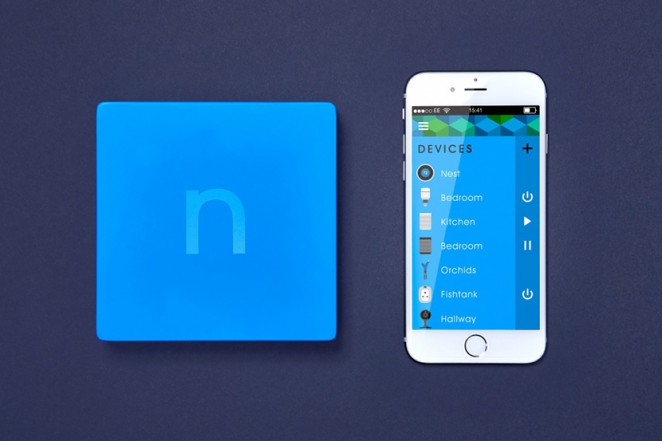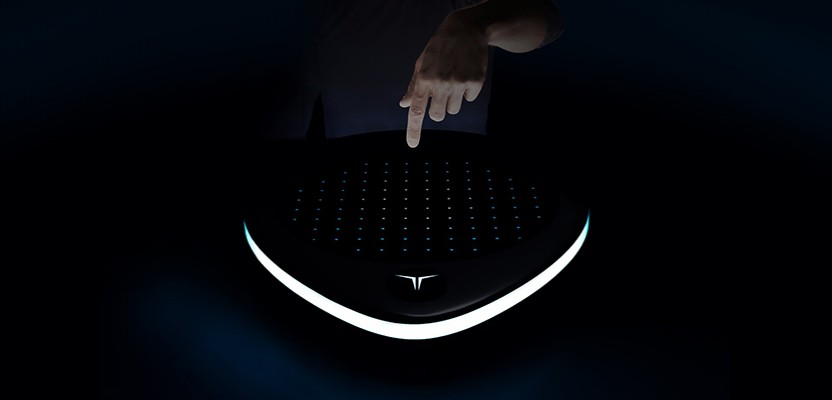The first VR musical instrument is backed by Abbey Road
A virtual reality musical instrument has been developed that can potentially mimic thousands of instruments through a unique (and really rather clever) 3D sensor. The design of the boldly named “Pulse” means that it recognises movement on its surface or in the air above it, and it can even recognise the motion of certain hand gestures and the shape of particular objects like (like guitar plectrums of drum sticks for example). This isn’t the first time such an instrument has been seen of course (remember the humble Theremin?), but it’s the sheer flexibility on display here that makes it so exciting. Users gesture above the Pulse to navigate, dampening percussion with a hand, brushing a snare drum, plucking strings in mid-air, moving faders, scratching vinyl, basically anything even remotely musical that you can think of, this beauty can replicate. Indeed, product consultancy Titan Reality, who designed and built the device, have said that the Pulse can potentially digitise any instrument!

A virtual reality musical instrument has been developed that can potentially mimic thousands of instruments through a unique 3D sensor
Users can also access a cloud-based library of sounds and instruments called “Explore,” many of which are from rare or luxury instruments that would, on their own, cost many times over what the Pulse will set you back (£750 in case you were wondering). Titan Reality Co-Founder Helen Benarrosh said: “As musicians and engineers ourselves, we know that people have dreamt to instantly get access to any instrument instruments, but also to be able to play them with the emotion they deserve. We hope that with Pulse we can give anyone – great musicians or beginners – even more opportunity to make the music they want; the way they want to.” Titan Reality is being backed by Abbey Road Red’s incubator programme and the Pulse is being crowd-funded HERE.
Are these Modular, self-driving pods the future of commuting?
An Italian design team is working on a new transport concept called “Next,” which is based on modular, self-driving vehicles that join together to form a system that’s sort of like a cross between a train and a bus. The system has been developed by industrial designer Tommaso Gecchelin, and is based around a series of modules that can drive autonomously on regular roads and can join together or detach whilst in motion. Sounds dangerous on paper, but stranger things have happened. Up to eight of the pods, which measure 2.7m long and can carry six seated people and four standing people, can join together to form the equivalent of a generic bus. The system also uses a bespoke app, which lets users call a module and programme it to take them to a certain location. The system also features service modules, which host, for example, bars, shops, restaurants and toilets. These can be called for a directly attached to the modules when they are in motion.
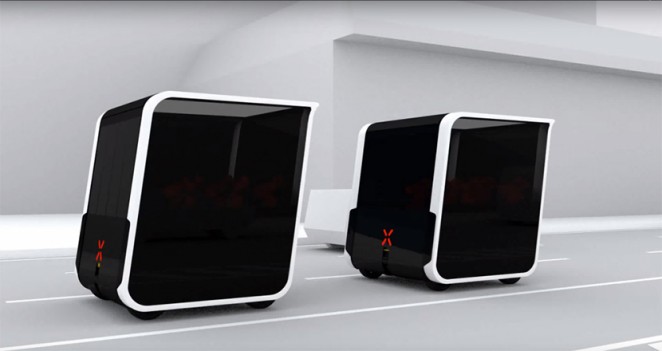
Tommaso Gecchelin is working on a new transport concept called “Next,” which is based on modular, self-driving vehicles that join together whilst in motion

The Next team said: “A smart routing system will autonomously drive the vehicles and join together modules, in order to redistribute passengers and optimise occupancy rate. The modules can drive autonomously on regular roads, join themselves and detach even when in motion, and that when joined, the doors between modules fold, creating a walkable open space among modules. These key features are the reason why this project is radically different and not comparable to other projects such as: folding cars (Hiriko and similar), Rinspeed Micromax and any other modular road train system based on new railways, dedicated infrastructures or on the locomotive-followers paradigm.” The Next team is currently looking to build a team of engineers as it prepares to start building working prototypes for a system that could be ready for launch as early as 2020! We’re officially excited!
Mumsnet launch the ultimate pregnancy app
Mumsnet, the online network for parents, has announced the launch of the Mumsnet Pregnancy Tracker, a mobile app created in collaboration with global marketing and technology agency DigitasLBi. The agency’s blended team of strategists, creatives and technologists has worked in partnership with Mumsnet to develop the app, which enables pregnant women and their partners to track every stage from conception to birth. The free iPhone app includes a weekly calendar combining medical facts with advice drawn from the real-life experiences of thousands of other mums. Mumsnet Pregnancy Tracker features carefully curated content from the Mumsnet team, and also integrates with the Mumsnet Talk app, giving users access to dedicated pregnancy conversation threads. The app also allows pregnant women and their partners to keep a record of significant moments throughout their pregnancy, from the first scan to the first kick.
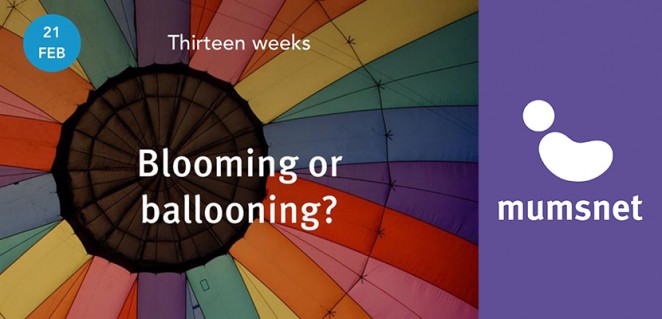
Mumsnet has announced the launch of the Mumsnet Pregnancy Tracker, a mobile app created in collaboration with DigitasLBi
Justine Roberts, Mumsnet CEO said: “We’ve worked in partnership with DigitasLBi to create an app which brings to life the unspoken truths and diverse experiences of pregnancy, enabling pregnant women and their partners to benefit from the wisdom of our brilliant community. It’s another way in which we’re trying to fulfil our mission of making parents’ lives easier.” Sergio Falletti, Technology Partner at DigitasLBi, added: “Mumsnet Pregnancy Tracker brings the wisdom of the crowd to a space which is currently dominated by sanitized, one-size-fits-all content. We’re excited to see parents-to-be interacting with the Mumsnet community and enjoying the depth of content it offers in a safe and convenient format.”
Blackberry stick to their guns with new Priv smartphone
Blackberry is finally making a bold step into the modern world with their new Android smartphone (the first not to use their own operating system), but they’re still keeping one toe in the past by including a slide-out physical keyboard as well as a (now standard) touchscreen. The move to Android comes after it was revealed that the Blackberry platform held just 0.4% of the international smartphone market. The new phone features a dual curved screen with a physical keyboard that slides from the bottom of the phone with a smart slide motion. There is also a virtual keyboard on the 5.4-inch screen. It also features an 18 megapixel camera and the new BlackBerry Hub function, which unites all messages into one place.

Blackberry’s first Android smartphone includes a slide-out physical keyboard as well as a (now standard) touchscreen
According to Blackberry, the “Priv” (short for “Privilege” perhaps?) “Combines the best of BlackBerry’s productivity, security and privacy features with the wide world of Google Play store apps,” and is the “Epitome of form and function, building on BlackBerry’s vaunted legacy of securing and keeping data private.” The phone has been developed with an emphasis on security. As well as all data on the phone being encrypted by default, it also features the BlackBerry DTEK programme, which apparently makes managing your privacy and security settings that much more simple and effective. Will the move to Android pay off? Or are Blackberry destined to be remembered of relics of the recent past? Only time (and sales figures) will tell.
Map design the ultimate home hub
A new home hub that controls multiple Wi-Fi connected home products aims to distinguish itself from internet routers with its bright blue design and ergonomic usability. Designed by consultancy Map, the nCube is a physical hub with an accompanying app, which can be used to control most connected which allow for on/off automation. The device in question is a striking blue cube, which aims to be simple, but distinctive. So, very Apple then. As well as the ability to automate heating, lighting and other services with one device, nCube can also supposedly increase security by connecting motion sensors, and it works on a local network rather than via Wi-Fi, or the cloud, so is generally more stable (at least in theory) than much of the competition.
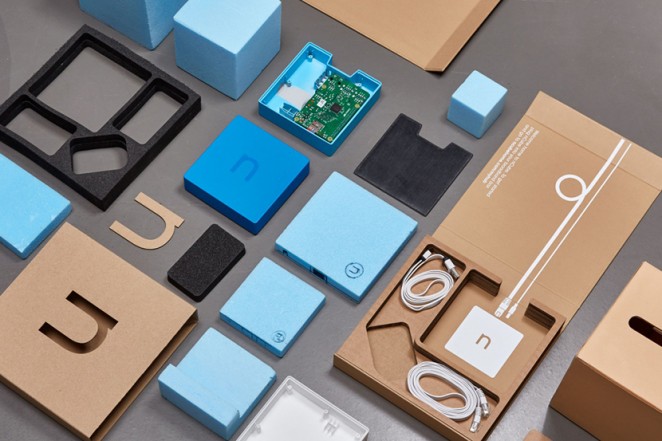
A new home hub from Map aims to distinguish itself from internet routers with its bright blue design and ergonomic usability
“There are loads of automated products, but they require an internet connection. This means you also need to trust the person providing that service with your data. NCube requires Wi-Fi initially when setting up, but not after that. Because nCube is tethered to the broadband router, you can’t really control where people will put it. We thought a square cube would be a simple way to make sure it works in lots of different places, such as under sofas, desks and on shelves. If you look at products in this area, like internet routers, they’re generally all ubiquitous black and white boxes. We wanted there to be a distinction between nCube and these other boxes, and show that it’s controlling them rather than one of them.” Alongside the device and accompanying app, Map also designed the packaging and worked on the branding and marketing collateral. NCube is currently undergoing a Kickstarter campaign to promote the product, where it is attempting to raise £25,000 (we’re at just over £10,000 at the time of writing). The product will go to market in February 2016 with an expected RRP of £139 and a discount for Kickstarter backers.
